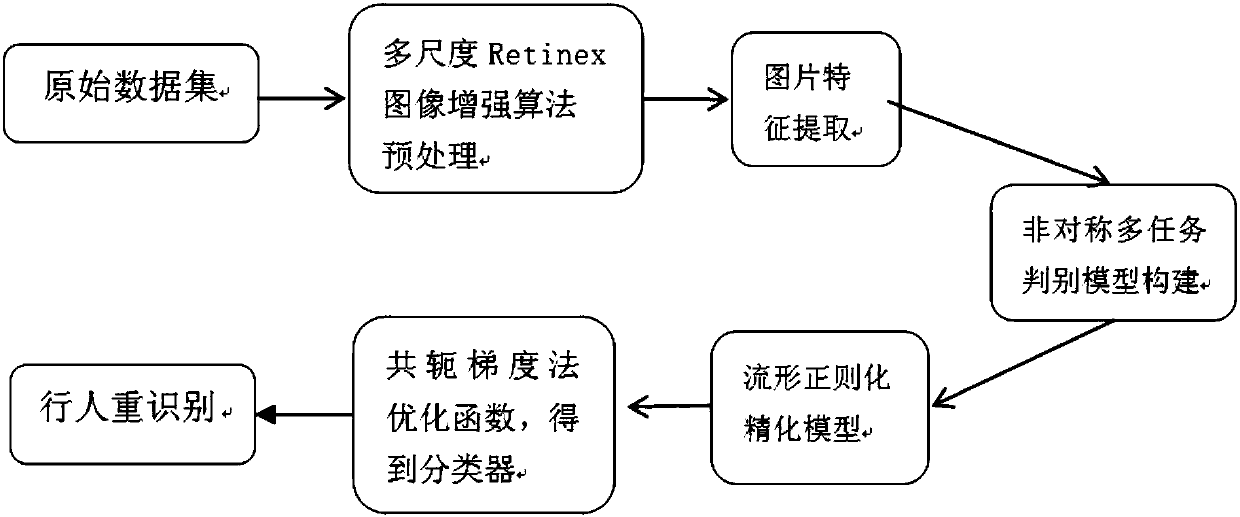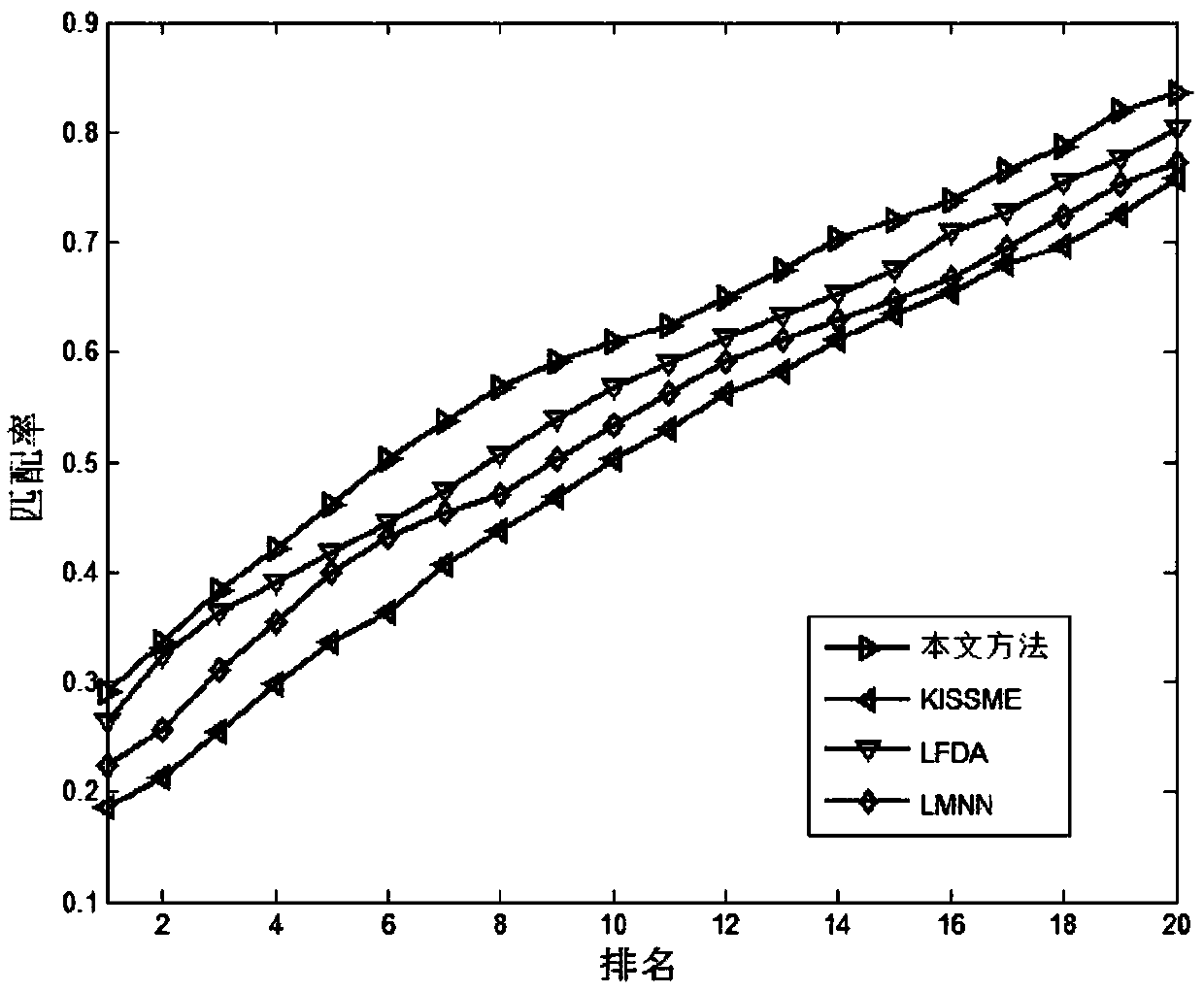Pedestrian re-recognition method based on migration learning
A person re-identification and transfer learning technology, applied in character and pattern recognition, instruments, computer parts, etc., can solve the problems of easy overfitting of models, class scale drift, and unreliable target fields.
- Summary
- Abstract
- Description
- Claims
- Application Information
AI Technical Summary
Problems solved by technology
Method used
Image
Examples
Embodiment Construction
[0071] The present invention will be further described below in conjunction with the accompanying drawings.
[0072] Such as figure 1 , 2 As shown, a pedestrian re-identification method based on transfer learning, including the following steps:
[0073] Step 1: Use the Retinex algorithm to preprocess the original images in the dataset;
[0074] The original pedestrian image is preprocessed by the multi-scale Retinex color image enhancement algorithm:
[0075] I(x,y)=L(x,y)*R(x,y) (1)
[0076] In the formula, I(x,y) represents the original image, L(x,y) represents the illumination component of the ambient light; R(x,y) represents the reflection component of the target object carrying image detail information; for an original image I(x, y), the corresponding R(x, y) is calculated by the retinex algorithm, then R(x, y) is the enhanced image; the processed image can greatly alleviate the influence of light and make the image closer to the original color .
[0077] Step 2: Ex...
PUM
 Login to View More
Login to View More Abstract
Description
Claims
Application Information
 Login to View More
Login to View More - R&D
- Intellectual Property
- Life Sciences
- Materials
- Tech Scout
- Unparalleled Data Quality
- Higher Quality Content
- 60% Fewer Hallucinations
Browse by: Latest US Patents, China's latest patents, Technical Efficacy Thesaurus, Application Domain, Technology Topic, Popular Technical Reports.
© 2025 PatSnap. All rights reserved.Legal|Privacy policy|Modern Slavery Act Transparency Statement|Sitemap|About US| Contact US: help@patsnap.com



